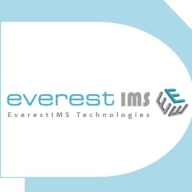

Splunk Observability Cloud and Infraon IMS compete in the monitoring and observability category. Based on the comparisons, Splunk appears to have an advantage due to its advanced real-time analysis and comprehensive cloud integration features, which enhance user adaptability and problem-solving.
Features: Splunk Observability Cloud is recognized for robust log searching, data integration, and custom dashboards. It provides end-to-end visibility and real-time problem-solving capabilities. Infraon IMS offers real-time network monitoring dashboards with extensive customization options, including role-based dashboards for different user levels.
Room for Improvement: Splunk could improve integration with various platforms, ensure better endpoint protection, and streamline its user interface. Further automation and enhanced security measures are desired. Infraon IMS can enhance its reporting capabilities, dashboard customizations, and add AI features to increase predictive abilities. There is a need for improved SNMP configuration customization and support for non-IPS devices.
Ease of Deployment and Customer Service: Splunk offers deployment flexibility across public, private, and hybrid clouds, providing a versatile edge. While its support is generally considered good, response times vary. Infraon IMS supports primarily on-premises deployments, with some private or hybrid cloud availability. Its technical support is adequate, with users having a degree of self-sufficiency.
Pricing and ROI: Splunk is viewed as expensive, with pricing linked to data volume and licensing models, leading to additional costs. Users report a return on investment due to comprehensive features. Infraon IMS offers a more cost-effective solution with flexible pricing based on needed features. It faces challenges with licensing clarity in larger deployments, though users appreciate its competitive pricing and ROI.
| Product | Market Share (%) |
|---|---|
| Splunk Observability Cloud | 1.3% |
| Infraon IMS | 0.3% |
| Other | 98.4% |

| Company Size | Count |
|---|---|
| Small Business | 3 |
| Midsize Enterprise | 2 |
| Large Enterprise | 3 |
| Company Size | Count |
|---|---|
| Small Business | 20 |
| Midsize Enterprise | 10 |
| Large Enterprise | 46 |
Infraon IMS offers network monitoring with real-time dashboards, customizable GUIs, and integrated tools, supporting device management and workflow automation efficiently.
Infraon IMS delivers stable performance with features tailored for easy customization and detailed network management. Users benefit from real-time monitoring through role-based dashboards and integrated ticketing tools. However, improvements in reporting, GUI usability, and AI integration are needed. Challenges include monitoring non-IPBS devices and improving connectivity visibility. Users require seamless Infraon Desk integration, ease of device addition, and enhanced topology views.
What are the key features of Infraon IMS?In industries like IT infrastructure and data center management, Infraon IMS is utilized for network monitoring and managing key components such as leased lines and firewalls. Its capabilities aid diverse geographical locations in overseeing data centers, offering centralized monitoring and access to critical infrastructure.
Splunk Observability Cloud offers sophisticated log searching, data integration, and customizable dashboards. With rapid deployment and ease of use, this cloud service enhances monitoring capabilities across IT infrastructures for comprehensive end-to-end visibility.
Focused on enhancing performance management and security, Splunk Observability Cloud supports environments through its data visualization and analysis tools. Users appreciate its robust application performance monitoring and troubleshooting insights. However, improvements in integrations, interface customization, scalability, and automation are needed. Users find value in its capabilities for infrastructure and network monitoring, as well as log analytics, albeit cost considerations and better documentation are desired. Enhancements in real-time monitoring and network protection are also noted as areas for development.
What are the key features?In industries, Splunk Observability Cloud is implemented for security management by analyzing logs from detection systems, offering real-time alerts and troubleshooting for cloud-native applications. It is leveraged for machine data analysis, improving infrastructure visibility and supporting network and application performance management efforts.
We monitor all Network Monitoring Software reviews to prevent fraudulent reviews and keep review quality high. We do not post reviews by company employees or direct competitors. We validate each review for authenticity via cross-reference with LinkedIn, and personal follow-up with the reviewer when necessary.